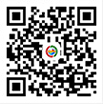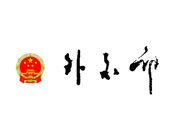


African Members of FOCAC
- Algeria
- Angola
- Benin
- Botswana
- Burkina Faso
- Burundi
- Cabo Verde
- Cameroon
- Central Africa
- Chad
- Comoros
- Congo
- Cote d'Ivoire
- Congo(Kinshasa)
- Djibouti
- Egypt
- Equatorial Guinea
- Eritrea
- Ethiopia
- Gabon
- Gambia
- Ghana
- Guinea
- Guinea-Bissau
- Kenya
- Lesotho
- Liberia
- Libya
- Madagascar
- Malawi
- Mali
- Mauritania
- Mauritius
- Morocco
- Mozambique
- Namibia
- Niger
- Nigeria
- Rwanda
- Sao Tome and Principe
- Senegal
- Seychelles
- Sierra Leone
- Somalia
- South Africa
- South Sudan
- Sudan
- Tanzania
- Togo
- Tunisia
- Uganda
- Zambia
- Zimbabwe
- The Commission of the African Union
Namibia
(Updated March 2018)
【Official Name】Republic of Namibia
【Area】824,269 km²
【Population】2.48 million.Ovambo is the largest ethnic group, making up half of the population. Other ethnic groups include theKavangos, the Damara, the Herero, the Caprivian, the Nama,and the Tswana. The official language is English, and recognized national languages include Afrikaans, German, and Otjiherero, among others. Approximately 90% Namibian inhabitants are Christians, while the rest practice indigenous religions.
【Capital】Windhoek with a population of 344,000. The highest annual average temperature is 30℃, and the lowest is 7℃.
【Head of State】President Hage Geingob (since 2015)
【Holidays】New Year (January 1); Independence Day (21March); Africa Day (25 May); Heroes’ Day (26 August); International Human Rights Day (10 December); Christmas Day (25 December);Family Day (26December)
【Geography and Climate】Namibia, formerly known as South West Africa, is bordered by Angola and Zambia to the north, Botswana to the east, South Africa to the south, and the Atlantic Ocean to the west. It has a total of about 1,600km of coastline, with most of its territory located at 1,000 to 1,500 meters above sea level. Its western coastal and eastern inland areas are desert, while the northern parts are plains. Major rivers in Namibia include the Orange, the Kunene, and the Okavango. The climate is dry and hot, and has four seasons including Spring (September to November), Summer (December to February), Autumn (March to May), and winter (June to August).
【History】From the 15th to 18th century, colonists from Portugal, the Netherlands, and Britain invaded one after another. In 1890, Germany occupied the country. In 1915, South Africa entered the war on the side of the Allies against Germany and captured South West Africa. In 1920, the League of Nations afforded South Africa a mandate to govern South West Africa. In April 1960, the South West Africa People’s Organization (SWAPO) was founded to fight for national independence. In 1966, the United Nations passed a resolution and disavowed South Africa’s mandate to govern South West Africa. In 1968, the UN General Assembly proclaimed that, in accordance with the desires of its people, South West Africa be renamed Namibia. In 1978, Security Council Resolution 435 was adopted to ensure the independence of Namibia. In 1989, under the auspices of the UN, the constituent assembly and presidential elections were held, whenthe SWAPO gained the majority of the votes and its leader, Sam Nujoma, became president. On 21 March, 1990, Namibia declared independence.




